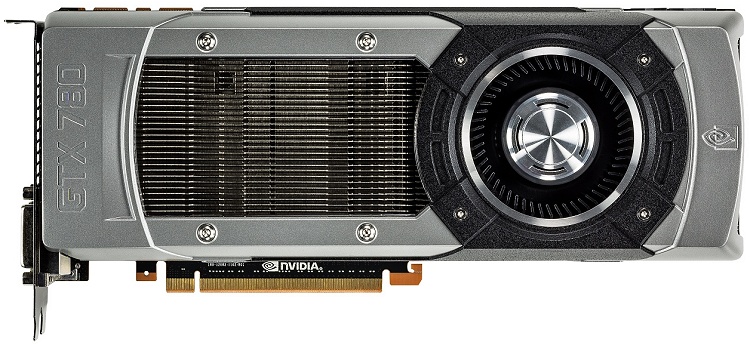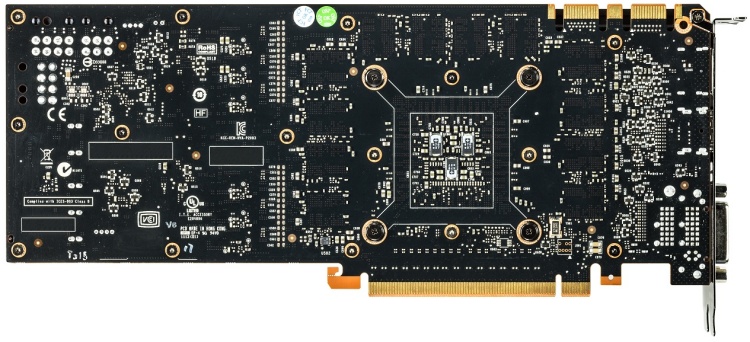 مضى وقت طويل على إصدار بطاقة رسوم GTX
مضى وقت طويل على إصدار بطاقة رسوم GTX
680 التي كانت خيار مثالي للاعبين , الأن شركة NVIDIA أعلنت أنها أصدرت
بطاقة رسوم الحديثة GeForce GTX 780 المتوفرة فقط بقيمة 650 دولار أمريكي و
التي تقدم أداء عالي بالمقارنة مع بطاقة رسوم GTX 680 . القوة ليس عنوان
الوحيد لبطاقة رسوم GeForce GTX 780 حيث تم تخفيف ضجيج مروحة التبريد
الخاصة ببطاقة الرسوم الجديدة بشكل كبير بالمقارنة مع السابقة و الفضل يعود
لتصميمها بتقنية 28nm .لتعرف على التفاصيل التقنية لهاThe GeForce GTX 780 reference board
measures 10.5” (26.7cm) length. Display outputs include two dual-link
DVIs, one HDMI and one DisplayPort connector. With 2304 CUDA cores at
its disposal, the GeForce GTX 780 features 50% more CUDA cores than the
GeForce GTX 680. The GTX 780 also gets a 3GB memory buffer standard
which is 50% more than the GTX 680.
Helping to take advantage of the extra
memory are six 64-bit memory controllers for a 384-bit wide memory bus.
Paired with a 6008Mhz GDDR5 memory clock, it provides up to 288.4GB/sec
of peak memory bandwidth to the GPU.

Those specs mean that those still
rocking a GeForce GTX 580 should be looking at around a 70% performance
improvement when upgrading to the GTX 780. It’s not just GTX 580 owners
that can expect a decent performance upgrade as owners of last year’s
GTX 680 will still receive around 30 – 40% more performance, at least on
paper.
The 12 SMX units providing 2304 CUDA cores
are clocked at 863MHz though using Boost 2.0 they can be clocked up to
900MHz in certain scenarios. The second generation GPU Boost technology
works in the background, dynamically adjusting the GPU’s graphics clock
speed based on operating conditions.

Originally GPU Boost was designed to
push the GPU to the highest possible clock speed while remaining within a
predefined power envelope. However Nvidia’s engineers found that the
GPU temperature usually limits performance first. Therefore with Boost
2.0 they have changed the way the technology works boosting clock speeds
according to the GPU temperature rather than power target. The new
target in question for the GTX 780 is 80 degrees Celsius.
In other words, the GTX 780 will
automatically boost to the highest clock frequency it can achieve as
long as the GPU temperature remains at 80C. Boost 2.0 constantly
monitors GPU temperature, adjusting the GPU’s clock and its voltage
on-the-fly to maintain this temperature.

Nvidia has borrowed the design of the GTX Titan for
the GTX 780 which is great news as the Titan not only looked imposing
but it was also whisper quiet. Many other recent high-end GPUs like the
GTX 780 make use of vapor chamber cooling, which consists of a copper
vapor chamber that extracts heat from the processor using an evaporation
process similar to a heatpipe, but more powerful. Helping to improve
efficiency here is a new thermal material designed by a company called
Shin-Etsu, which is said to provide twice the performance of the grease
used on the GTX 680.
Additionally, Nvidia has included an extra
heatsink behind the 80mm blower-style fan that increases the cooling
area. There is also an aluminum baseplate, which provides additional
cooling for the PCB and board components. The guts of the cooling
operation are covered in a case that encloses the top of the card.
Given the high-end nature of this board,
Nvidia engineers decided to use an aluminum casing for the cover. At its
center is a clear polycarbonate window, allowing you to see the vapor
chamber and dual-slot heatsink used to cool the GPU.

Another nice touch in our opinion: the
side of the card features a large GeForce GTX logo that glows green when
the system is turned on. We think this looks cool, but if it’s not for
you, the LED intensity can be adjusted in software.
Beside the logo towards the end of the card
is a pair of PCI Express power connectors. The configuration is the
same as the GTX Titan meaning you will find a single 8-pin along with a
6-pin connector. The GTX 780 has been given a TDP rating of 250 watts,
which is 28% greater than the GTX 680, so Nvidia recommends using a 600W
power supply. The board features a 6+2 power phase design that Nvidia
says feeds enough power even when overclocking. Six phases are dedicated
to the GPU while two are for the GDDR5 memory




